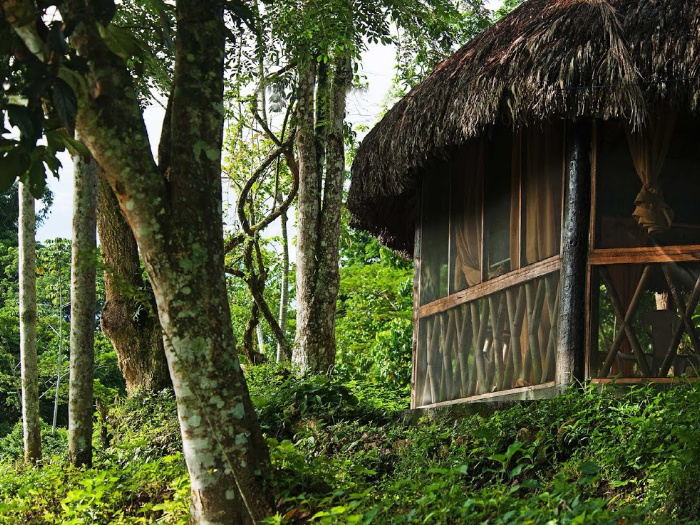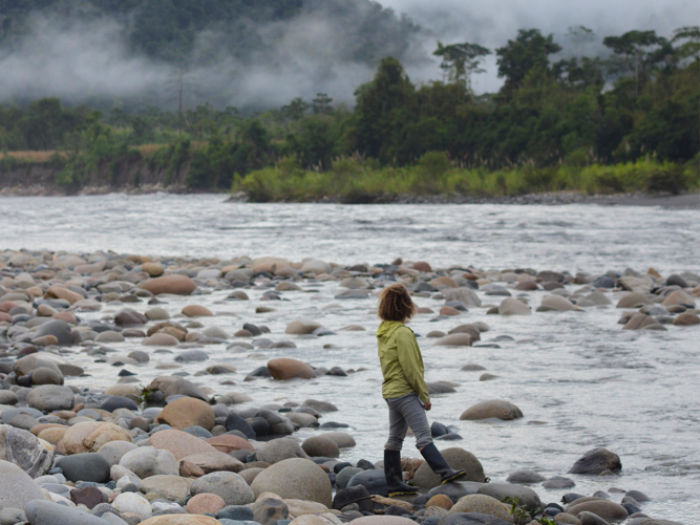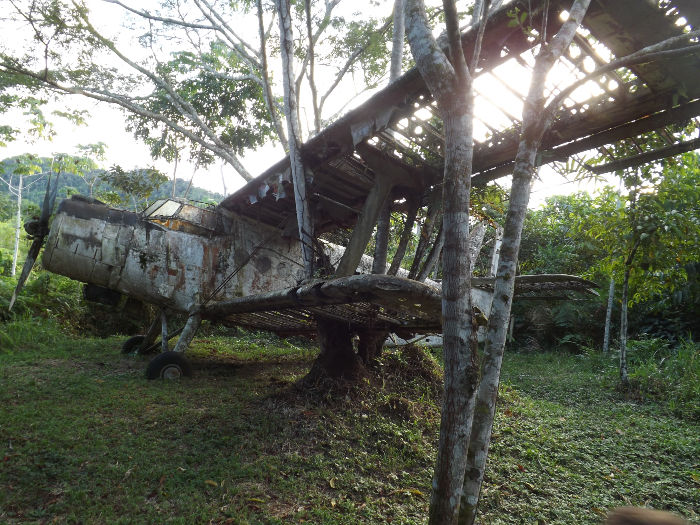The Manu Biological Station (formerly called Villa Carmen Biological Station) is located on over 7,500 acres of land within the spectacular Manu Biosphere Reserve in Southern Peru.
Spanning an elevational gradient of 1,700 to almost 4,000 feet above sea level, Manu hosts an incredible array of species found in a variety of habitats, ranging from cloud forest to montane and lowland rainforest.
The station neighbors several indigenous Wachiperi and Machiguenga communities as well as The Wachiperi Haramba Queros Conservation Concession, established with assistance from Amazon Conservation as the first conservation concession in Peru run by an indigenous community. Manu Biological Station serves to promote sustainable agroforestry and aquaculture, host educational programs, and further incorporate local communities into conservation efforts.
The station supports a wide variety of habitats including old-growth rainforest, lower mountain forest, secondary forests, streams, rivers, waterfalls, and a highly diverse flora and fauna.
Dotted with sparkling streams, rivers, and waterfalls, Manu is an ideal place to discover the beauty and bounty of the Amazon.


Our Manu campus can accommodate up to 100 people. Wilderness camping is permitted. Our facilities and services include:
Nestled in the Andean foothills, perched between the mountains and the lowlands, Manu Biological Station offers birdwatchers the opportunity to see a Blue-headed Macaw, Hairy-crested Antbird, Roufous-capped Nunlet, and charismatic Hoatzin.
The 7,600-acre property is located in the buffer zone of Manu National Park, and boasts over 25 miles of trails spanning a wide variety of habitats, including old-growth rainforest, lower montane forest, secondary forest, streams, rivers and waterfalls.
The station also neighbors several indigenous Wachiperi and Machiguenga communities as well as the Haramba Queros Wachiperi Conservation Concession, established with assistance from Amazon Conservation as the first conservation concession in Peru run by an indigenous community.
As part of your itinerary, we can book tours to the Santa Rosa de Huacaria or Queros Wachiperi indigenous communities.
Please contact bherrera@amazonjourneys.pe for room options and price lists.
If you are not a researcher or course but would like to bird or explore the Amazon with us, check out our Ecolodges!
At Manu, six brand new cabins with floor-to-ceiling screened windows await you. Each cabin features comfortable beds (your choice of single or double) with mosquito nets, two Adirondack chairs, a luggage and clothes rack, and a luxurious private bathroom.
A brand new dining room, lounge, and bar welcome you for meals and provide comfortable seating for reviewing your lists at the end of the day.
Max occupancy 18 (3 per cabin), minimum stay 1 night. Children must be accompanied by their parent(s) but are welcome throughout Manu. Children under age 13 are eligible for a discounted stay.Limited internet available 24/7.
Smoking is prohibited indoors. Manu is not handicap accessible; paths may include steps and be fashioned from a variety of materials including loose gravel, cement, or dirt. Physical limitations should be considered when contemplating hikes or other excursions.
Meals include local, fresh Peruvian cooking sourced from the kitchen garden. If you have special meal requirements (vegetarian, gluten free, etc.) please inform the reservation staff prior to your arrival to the station. Given the location of stations, it may be difficult to accommodate all dietary preferences and the variety of food may be limited.
Manu is located approximately 7 hours by road from Cusco. The road is paved for the first two hours of the journey, and the remainder is a winding dirt road with spectacular views of forests, steep ravines, waterfalls, cultural sites, and of course birds.
We can arrange for a private vehicle with an experienced driver.
If you are prone to motion sickness, you might consider taking medication such as Dramamine.
The elevation at Manu is 1,700 to 3,940 feet; however, to travel there you will start in Cusco at 11,500 feet. For those affected by altitude, keep hydrated, rest and eat lightly. Acetazolamide (Diamox) is a recommended preventative medicine.
